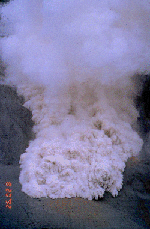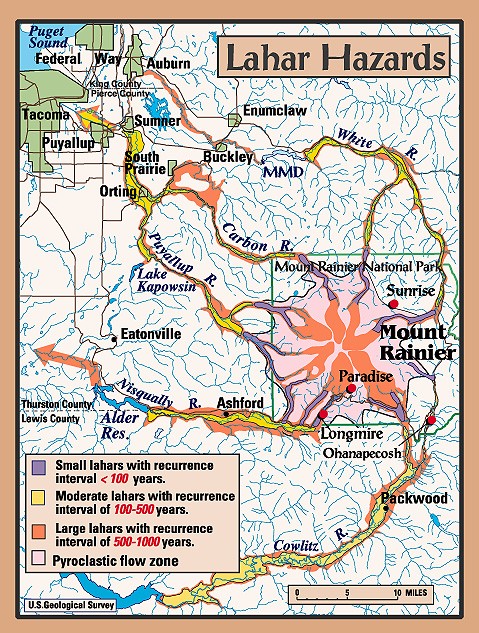Pyroclastic Flow

- What is pyroclastic flow?
- Pyroclastic flow is composed mainly of volcanic rock and dense ash material and is ejected from an exploding volcano. In contrast to the slow moving lava flow, pyroclastic flow moves at speeds up to 200 miles an hour (Hoblitt and others, 1995:6). The result is a tremendous amount of rock traveling down steep slopes at great speeds. Humans in the path of a pyroclastic flow would not survive.
- Pyroclastic flow at Mount Rainier?
- Geological evidence shows that pyroclastic flow has occurred at Mount Rainier in the past. There have been approximately 30-40 deposits from pyroclastic flows within the last 5,600 years; therefore, pyroclastic flows are likely to occur during future eruptions (Sisson, 1998). Also, it is thought that past pyroclastic flows have mixed with snow, ice and other debris and changed into lahars. This may be important because areas thought to be safe from pyroclastic flow might not be safe. The pyroclastic flow could turn into a lahar, and lahars are a greater threat. The following hazard map illustrates the areas of greatest risk for both pyroclastic flow and lahar activity.

-
Click Here - Learning From Experience Pyroclastic Flow
Top image: Pyroclastic flow from Mt. Pinatubo.
Photo credit: MTU VolcanoesReturn to Hazards Associated with an Eruption